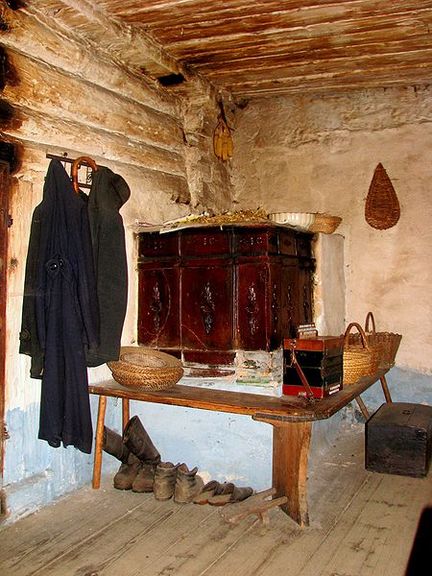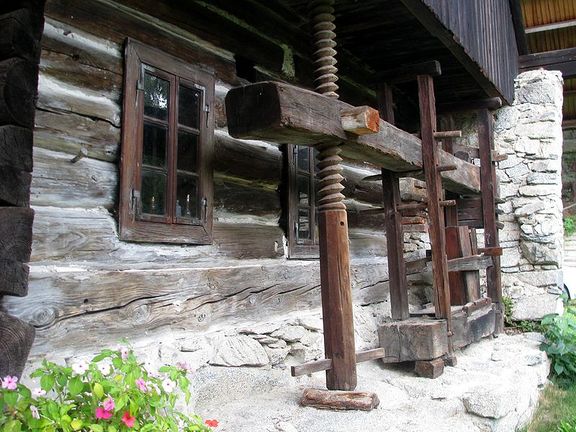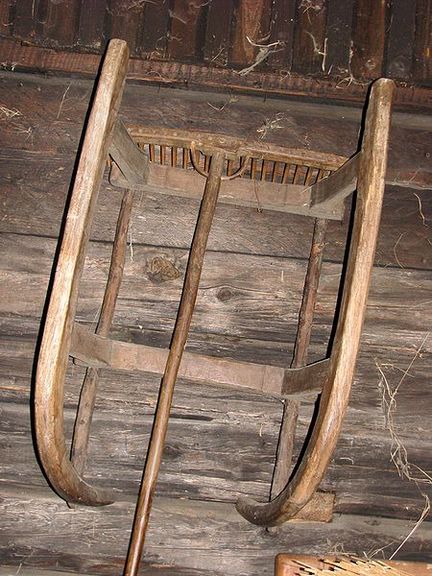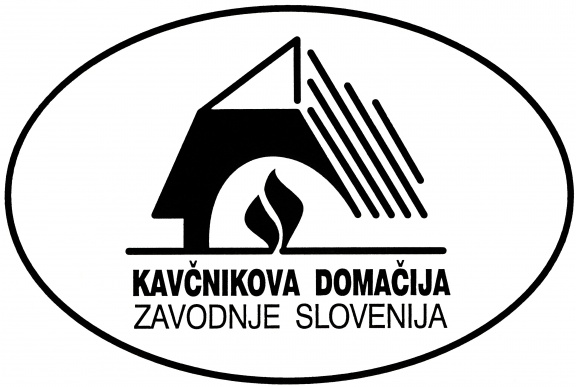Difference between revisions of "Kavčnik Homestead"
(frtk!) |
|||
| (12 intermediate revisions by 6 users not shown) | |||
| Line 1: | Line 1: | ||
{{Article | {{Article | ||
| − | | status = | + | | status = PHOTO |
| maintainer = Ivan Pirnat | | maintainer = Ivan Pirnat | ||
}} | }} | ||
| Line 6: | Line 6: | ||
| name = Kavčnik Homestead | | name = Kavčnik Homestead | ||
| localname = Kavčnikova domačija | | localname = Kavčnikova domačija | ||
| + | | logo = Kavcnik Homestead (logo).jpg | ||
| street = Zavodnje 43 | | street = Zavodnje 43 | ||
| town = SI-3325 Šoštanj | | town = SI-3325 Šoštanj | ||
| + | | map = http://www.openstreetmap.org/?lon=15.01688&lat=46.42525&zoom=15&layer=mapnik | ||
| telephone = 386 (0) 3 898 2630 | | telephone = 386 (0) 3 898 2630 | ||
| fax = 386 (0) 3 898 2640 | | fax = 386 (0) 3 898 2640 | ||
| Line 22: | Line 24: | ||
{{Teaser| | {{Teaser| | ||
| − | [[Kavčnik Homestead]] in Zavodnje near Šoštanj is a splendid example of Slovene vernacular architecture, with a 400-year-old smokehouse (''dimnica'' or ''kuhna''). It was in use in the Alpine region and is the southernmost surviving example. A unique example of rural architecture the homestead was opened as an open air museum in [[established::1992]] and was nominated for the Museum of the Year Award in 1993. As the homestead was inhabited until | + | |
| + | {{Image|Kavcnik Homestead - 01.jpg}} | ||
| + | |||
| + | [[Kavčnik Homestead]] in Zavodnje near Šoštanj is a splendid example of Slovene vernacular architecture, with a 400-year-old smokehouse (''dimnica'' or ''kuhna''). It was in use in the Alpine region and is the southernmost surviving example. A unique example of rural architecture the homestead was opened as an open air museum in [[established::1992]] and was nominated for the Museum of the Year Award in 1993. As the homestead was inhabited until 1983, the tools, furniture, and living quarters found within still give the impression that somebody is living there. | ||
}} | }} | ||
| − | The entire farm was built around its brick hearth (''dimnica''), the remaining buildings are wooden including the roofs. Around the main living quarters with a stove, there are a barn, a hayrack (''kozolec''), herb garden, tool sheds, a grape press, a field toilet ... But the most important and the oldest is the ''dimnica'' – also called ''kuhna'' (a variant of ''kuhinja'' meaning kitchen) by former inhabitants – that prevailed in northern Slovenia from the 11th until the late-18th century when, because of frequent fires, the authorities began to adopt strict measures to ban them. | + | ==Hearth as a heart of a dwelling== |
| + | The entire farm was built around its brick hearth (''dimnica''), the remaining buildings are wooden including the roofs. Around the main living quarters with a stove, there are a barn, a hayrack (''kozolec''), herb garden, tool sheds, a grape press, a field toilet ... But the most important and the oldest is the ''dimnica'' – also called ''kuhna'' (a variant of ''kuhinja'' meaning "kitchen") by former inhabitants – that prevailed in northern Slovenia from the 11th until the late-18th century when, because of frequent fires, the authorities began to adopt strict measures to ban them. The smokehouse's little window with its unique sliding mechanism, and details of the wooden hinges at the entrance door to the shed, confirm that the core of the building, including the shed, probably dates from the 17th century. At that time it was the only living quarter in the Kavčnik homestead. | ||
| + | ==Experience== | ||
By prior appointment, the museum staff can light the fire in the hearth and visitors may also roast apples on the open fire, providing a truly authentic experience of the simplicity of life in the past. Although the smoke hanging in the air may cause visitors to rethink their romantic impressions of the past when it starts to aggravate their eyes and lungs, a visit to the Kavčnik Homestead provides a rich and bona fide experience of Slovenian cultural history. | By prior appointment, the museum staff can light the fire in the hearth and visitors may also roast apples on the open fire, providing a truly authentic experience of the simplicity of life in the past. Although the smoke hanging in the air may cause visitors to rethink their romantic impressions of the past when it starts to aggravate their eyes and lungs, a visit to the Kavčnik Homestead provides a rich and bona fide experience of Slovenian cultural history. | ||
| Line 32: | Line 39: | ||
* [[Velenje Museum]] | * [[Velenje Museum]] | ||
* [[Velenje Castle]] | * [[Velenje Castle]] | ||
| − | |||
== External links == | == External links == | ||
| − | *[ | + | *[https://muzej-velenje.si/en/muzej_velenje/kavcnik-homestead/ Kavčnik Homestead on Velenje Museum web page] |
| − | |||
*[http://sl.wikipedia.org/wiki/Kav%C4%8Dnikova_doma%C4%8Dija Kavčnik Homestead on Wikipedija] (in Slovenian) | *[http://sl.wikipedia.org/wiki/Kav%C4%8Dnikova_doma%C4%8Dija Kavčnik Homestead on Wikipedija] (in Slovenian) | ||
| + | |||
| + | {{gallery}} | ||
[[Category:Monuments and sites]] | [[Category:Monuments and sites]] | ||
| + | |||
| + | [[Category:Venues]] | ||
| + | [[Category:Ethnographic museums and collections]] | ||
| + | [[Category:Vernacular architecture]] | ||
| + | [[Category:Updated 2020]] | ||
| + | [[Category:Cultural heritage]] | ||
Latest revision as of 15:03, 23 February 2021
Hearth as a heart of a dwelling
The entire farm was built around its brick hearth (dimnica), the remaining buildings are wooden including the roofs. Around the main living quarters with a stove, there are a barn, a hayrack (kozolec), herb garden, tool sheds, a grape press, a field toilet ... But the most important and the oldest is the dimnica – also called kuhna (a variant of kuhinja meaning "kitchen") by former inhabitants – that prevailed in northern Slovenia from the 11th until the late-18th century when, because of frequent fires, the authorities began to adopt strict measures to ban them. The smokehouse's little window with its unique sliding mechanism, and details of the wooden hinges at the entrance door to the shed, confirm that the core of the building, including the shed, probably dates from the 17th century. At that time it was the only living quarter in the Kavčnik homestead.
Experience
By prior appointment, the museum staff can light the fire in the hearth and visitors may also roast apples on the open fire, providing a truly authentic experience of the simplicity of life in the past. Although the smoke hanging in the air may cause visitors to rethink their romantic impressions of the past when it starts to aggravate their eyes and lungs, a visit to the Kavčnik Homestead provides a rich and bona fide experience of Slovenian cultural history.
See also
External links
Gallery
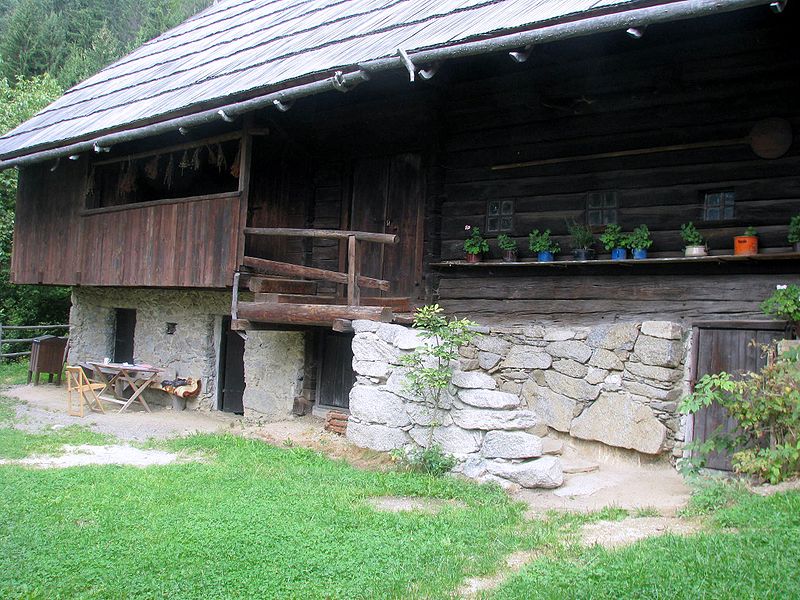 The entrance of Kavčnik Homestead, a museum of folk architecture with the core of the building -the smoke house - dating from circa 17th century. +
The entrance of Kavčnik Homestead, a museum of folk architecture with the core of the building -the smoke house - dating from circa 17th century. +


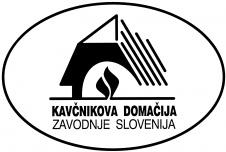
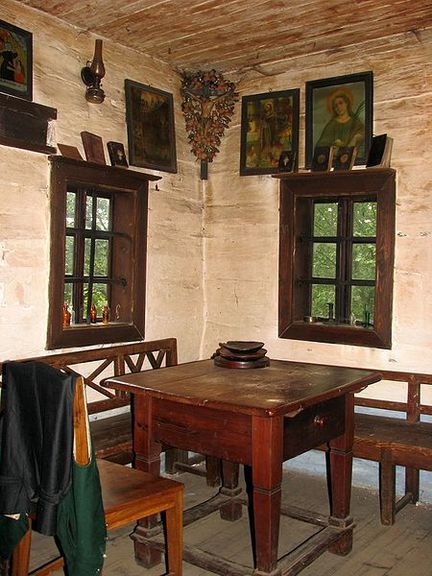
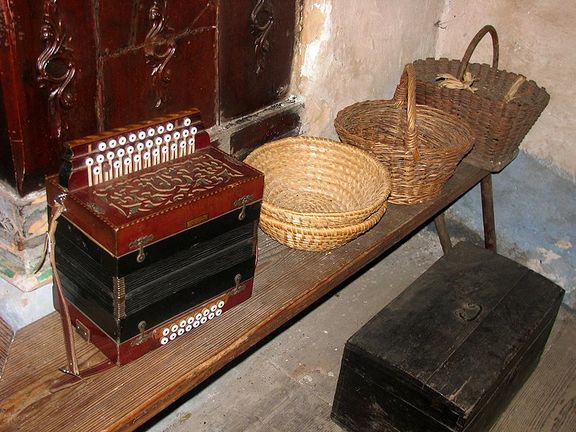
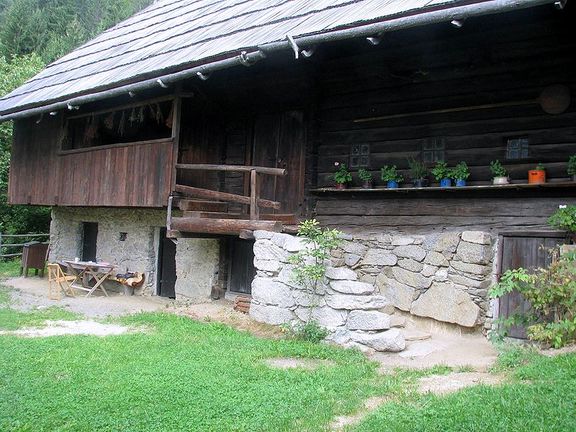

![Kavčnik Homestead, the fireplace in the smokehouse [Dimnica] - an historic style of kitchen with no chimney. This was the first part of the building that was constructed, probably in the 17th century, with other rooms added later](/images/thumb/c/cc/Kavcnik_Homestead_2007_Fireplace_Photo_Janez_Novak.jpg/576px-Kavcnik_Homestead_2007_Fireplace_Photo_Janez_Novak.jpg)
